15 years one-stop China custom CNC machining parts factory
 173 |
Published by VMT at Feb 17 2025 | Reading Time:About 8 minutes
173 |
Published by VMT at Feb 17 2025 | Reading Time:About 8 minutes
In today’s fast-paced manufacturing world, rapid prototyping has become a crucial step in product development. But how do you turn a design concept into a tangible prototype? 3D printing prototyping offers an innovative solution, allowing for faster, more cost-effective production of prototype models. The problem many manufacturers face is the traditional method of prototyping, which can be both time-consuming and expensive. The solution? 3D printing technology, which streamlines the prototyping process, enabling quicker iterations and better design insights, while reducing overall production costs. This article explores the significance of 3D prototyping and why it’s becoming an essential tool for manufacturers across various industries.
3D printing prototyping is an efficient way to bring product designs to life quickly. It reduces lead times and cuts costs by allowing designers to create prototypes directly from CAD files without the need for expensive molds or tooling. It is revolutionizing industries like aerospace, healthcare, automotive, and more. Rapid prototyping with 3D printing not only speeds up product development but also helps refine designs before mass production.
Now that we’ve covered the basics of 3D prototyping, let’s dive deeper into the technologies behind it, the industries that benefit most, and how the process is carried out—from CAD design to material selection. Understanding the specifics of 3D printing will give you a clearer picture of why this method is vital for efficient and cost-effective product development.
3D prototyping refers to the process of creating a three-dimensional model from a digital design, usually through additive manufacturing, or 3D printing. By converting CAD models into physical prototypes, designers and engineers can assess their designs, test functionality, and refine concepts before moving to full-scale production. This process allows for better iteration and improvement of designs with less risk and lower costs compared to traditional manufacturing methods.
There are several 3D printing technologies available, each offering unique advantages:
Each of these technologies plays a different role in rapid prototyping and is chosen based on material requirements, complexity, and desired finish quality.
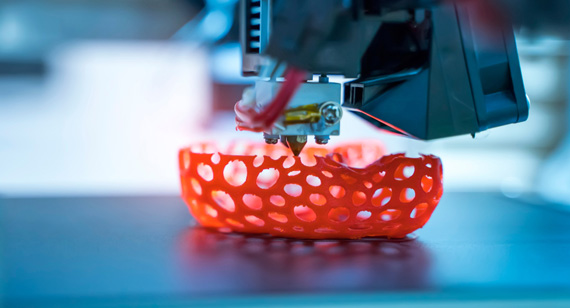
Rapid prototyping is a design and manufacturing process where a physical model of a product is quickly created using 3D printing. This technique is aimed at speeding up the product development cycle, reducing the time between the initial design and the physical prototype. Unlike traditional prototyping methods, rapid prototyping involves fewer steps, allowing companies to test their designs more frequently and make improvements on the fly. This is especially useful in industries like aerospace, automotive, and healthcare, where product performance needs to be validated quickly.
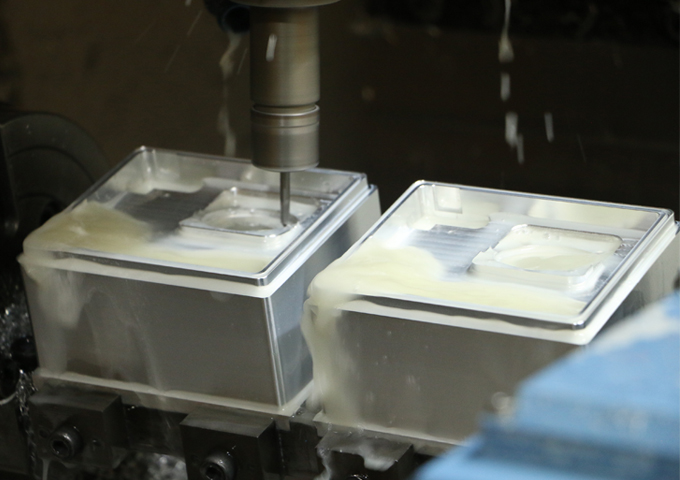
3D rapid prototyping has revolutionized product development across various industries. By enabling the creation of functional prototypes quickly and cost-effectively, it helps businesses refine their designs, test product performance, and reduce production risks. Industries that rely on precise, customized, and complex products have particularly embraced 3D prototyping as an essential tool in their product development process. Let’s explore how this technology benefits different sectors.
Aerospace
The aerospace industry requires high precision and reliability in every part. 3D rapid prototyping allows aerospace manufacturers to test designs quickly and efficiently before committing to expensive manufacturing processes. Prototypes made through 3D printing can simulate the performance of components in real-world conditions, reducing time spent in traditional testing phases. This technology is especially valuable for creating lightweight components that are crucial for aircraft performance and fuel efficiency. Additionally, 3D prototyping enables manufacturers to create complex, custom parts that would otherwise be difficult or impossible to achieve with traditional methods.
Aerospace companies use 3D printing to prototype components such as engine parts, brackets, airframes, and interior fittings. By using materials like metal alloys and polymers, manufacturers can achieve high strength-to-weight ratios, which is a critical factor in the aerospace industry. Moreover, 3D printing allows for rapid iteration of parts, improving both the design and functional aspects of components in a fraction of the time traditional methods would require.
Healthcare
In healthcare, precision is paramount, and 3D prototyping has proven to be a game-changer. Medical device manufacturers, as well as professionals involved in custom prosthetics, implants, and surgical tools, benefit greatly from 3D printing. The ability to produce highly detailed and personalized prototypes allows medical professionals to test devices and ensure they fit perfectly before final production. For example, 3D printed prosthetics and implants can be tailored to fit the unique anatomical features of individual patients, leading to more effective treatments and faster recovery times.
In addition to customized medical devices, 3D printing is also used in creating anatomical models. These models help doctors plan surgeries by providing a real-world, 3D representation of a patient’s anatomy. Surgeons can practice procedures on these models before operating on the patient, significantly reducing the risk of complications during surgery.
The automotive industry has long been a proponent of 3D rapid prototyping, using it to test designs, create functional prototypes, and even produce end-use parts. Whether for prototype cars or custom automotive parts, 3D printing allows manufacturers to iterate designs quickly and test for performance, durability, and fit. This reduces both development time and costs, especially when it comes to testing multiple design concepts.
In automotive manufacturing, 3D prototyping is used to create everything from interior components like dashboards and console parts to intricate engine components. The ability to test various materials and configurations before finalizing the design ensures that manufacturers can optimize their products for both performance and cost-efficiency. Additionally, 3D prototyping enables the creation of low-volume or niche parts that may not be feasible with traditional production methods.
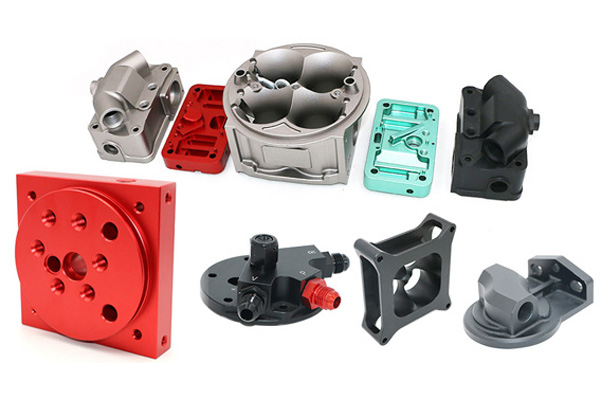
In the robotics sector, rapid prototyping is invaluable for designing and refining components such as robotic arms, joints, and grippers. Robotics requires precise and often intricate parts that can handle complex movements and heavy loads. With 3D prototyping, manufacturers can test robotic components for functionality and durability before committing to full-scale production.
Furthermore, 3D printing allows for the rapid testing of various materials to determine which best suits the specific needs of a robot’s application. Whether it’s lightweight plastic for a drone or high-strength metal for a manufacturing robot, 3D prototyping allows for more efficient and flexible design testing. Additionally, the ability to quickly modify prototypes leads to faster development cycles and a more responsive design process.
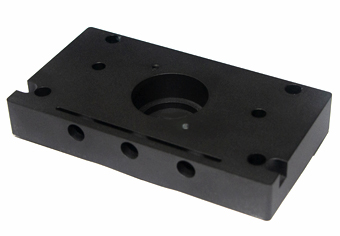
Jewelry
Jewelry design has long been about precision, detail, and customization—qualities that 3D prototyping excels at. By using 3D printing, jewelers can create highly detailed prototypes of their designs, test the look and feel of each piece, and make adjustments before committing to the final product. 3D prototyping allows for the creation of intricate, one-of-a-kind pieces that are difficult to achieve through traditional manufacturing methods.
One of the main advantages for jewelers is the ability to create prototypes using materials like resin, which can later be used for casting into metals such as gold, silver, or platinum. This process, known as “lost wax casting,” enables jewelers to make highly accurate models before the final piece is crafted. Additionally, 3D printing reduces the cost of making molds, saving both time and money, especially when producing custom or limited-run designs.
3D prototyping is a versatile tool that offers unique advantages across a variety of industries. Whether it’s creating lightweight aerospace components, custom medical devices, intricate jewelry, or high-performance automotive parts, rapid prototyping helps reduce development time and manufacturing costs. It also enhances design flexibility, allowing manufacturers to test multiple iterations quickly and effectively, leading to better final products and more efficient production processes.
Creating a 3D printed prototype is an essential step in product development, as it allows designers and engineers to visualize and test a product before committing to large-scale production. The process of 3D printing a prototype involves several stages, from designing the model to preparing the file for the printer, followed by printing and post-processing. In this section, we’ll walk you through the process of creating a 3D printed prototype and provide key insights into each phase, starting with the crucial CAD design phase.
The foundation of 3D printing a prototype starts with Computer-Aided Design (CAD). CAD is the digital process of designing a 3D object using specialized software. This is the first and most critical step because a successful 3D print relies on an accurate and well-structured CAD model. A CAD design serves as the blueprint for your prototype, containing detailed specifications such as dimensions, shapes, and surface features. The design can be based on an initial idea or modified from an existing prototype.
Once the design is complete, it must be converted into a format that the 3D printer can read. A CAD file is typically saved in one of several file formats, each offering unique features and applications. These formats allow the design to be interpreted by slicing software, which will divide the model into layers for the printing process.
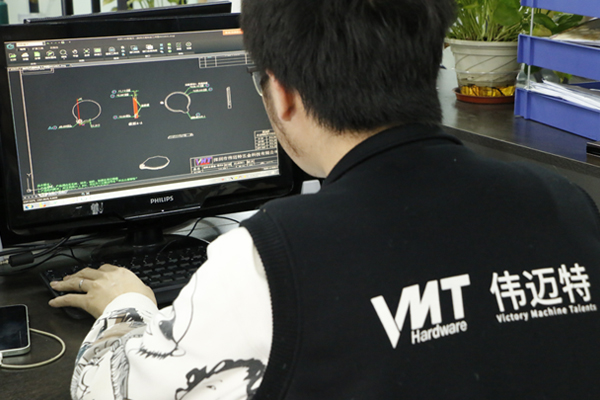
What is a CAD Design?
A CAD design is a digital representation of an object created through CAD software. It allows engineers, designers, and manufacturers to visualize, analyze, and modify the design before it is produced physically. CAD designs can range from simple geometric shapes to complex, organic forms, making it an indispensable tool in industries such as manufacturing, aerospace, healthcare, and automotive. CAD software offers a variety of tools and features, including the ability to simulate stress tests, analyze material performance, and create assembly layouts. This digital design phase ensures the prototype is precisely what is needed before any material is ever used.
Some Common Formats Include:
Once a CAD design is completed, it must be saved in a format compatible with 3D printing technologies. Some of the most common file formats include:
Choosing the right file format depends on the complexity of the design and the capabilities of the 3D printer. Each format has its own strengths and is suited to specific types of prototypes, so understanding the requirements of both the design and the 3D printer is essential for a successful print. With the proper CAD design and file preparation, you’re ready to move on to the next steps in the prototyping process, which involve slicing the design, choosing materials, and preparing for the printing process itself.
Digital preprocessing is a crucial step in preparing a CAD design for 3D printing. This stage involves slicing the model into layers and configuring various print settings to ensure that the design is printed successfully and with optimal quality. The main objective of this phase is to convert the 3D model into instructions that the 3D printer can interpret, enabling it to build the object layer by layer. In this section, we will explore the digital preprocessing process, including popular slicing software options and key parameters to consider before printing.
Common Slicing Software Options
Slicing software is the bridge between the 3D design file and the 3D printer. It breaks down the model into thin horizontal layers and generates the G-code that directs the 3D printer on how to print each layer. There are several slicing software options available, and each offers different features depending on your needs. Some of the most widely used slicing software programs include:
Cura is one of the most popular and versatile slicing software options available. Developed by Ultimaker, it is open-source and free to use. Cura is known for its user-friendly interface and comprehensive feature set, making it suitable for both beginners and advanced users. It supports a wide range of 3D printers and offers customizable print settings, such as print speed, layer height, and infill density. Cura also includes features like print time estimation, material compatibility, and a wide range of advanced settings for optimizing print quality.
PrusaSlicer is another widely used slicing software, specifically designed for use with Prusa 3D printers. However, it is compatible with a variety of other 3D printers as well. PrusaSlicer is known for its powerful features, including support for multi-material printing, variable layer height, and customizable supports. It offers a high degree of control over print settings, allowing users to fine-tune parameters for optimal print results. PrusaSlicer is particularly valued for its excellent community support and frequent software updates.
Simplify3D is a premium slicing software that provides users with a high level of control and customization. It offers advanced features like support generation, customizable infill patterns, and the ability to control the printer’s movement on a layer-by-layer basis. Simplify3D also supports a wide variety of 3D printers and includes tools for previewing the print path and troubleshooting potential issues before printing begins. While it is not free, many professionals choose Simplify3D for its reliability and precision in complex prints.
After Slicing: Uploading the File
Once the design has been sliced, the next step is to upload the file to the 3D printer. There are several ways to transfer the sliced file to the printer, depending on the printer’s capabilities:
Many 3D printers support file transfer via a USB flash drive. Simply copy the sliced file to a USB drive and plug it into the 3D printer. This is one of the most common methods for transferring files and is widely supported.
Some advanced 3D printers allow users to upload files wirelessly via Wi-Fi. This option is convenient because it eliminates the need for physical media and allows users to send the print job remotely. Many modern 3D printers are equipped with Wi-Fi capabilities, enabling seamless integration with cloud-based services and other remote file management tools.
Like USB drives, SD cards are often used to transfer files to 3D printers. This method is popular with 3D printers that don’t have Wi-Fi capabilities. Simply insert the SD card into the printer and begin the printing process directly from the card.
Once the file has been successfully uploaded, the printer is ready to begin the printing process. However, before the printing starts, you must select the materials and set the parameters.
Selecting Materials and Defining Print Parameters
In the digital preprocessing stage, choosing the right materials and defining the print settings is essential for achieving the desired results. The two most important considerations are:
Print settings include parameters such as layer height, print speed, temperature, and infill density. These settings influence the quality, strength, and speed of the 3D print. For example, a lower layer height will result in a smoother finish but will take longer to print. Conversely, a higher layer height will speed up the process but may produce a rougher surface. Print speed also plays a crucial role, with faster speeds potentially sacrificing print quality for quicker results. The right combination of print settings will depend on the specific application of the prototype and the material being used.
The material chosen for the print will impact not only the appearance of the prototype but also its strength, flexibility, and durability. Common materials used for 3D prototyping include PLA, ABS, Nylon, TPU, and resin. Each material has its own properties, such as temperature resistance, flexibility, and ease of use. It is essential to choose a material that aligns with the intended use of the prototype. For example, flexible TPU may be ideal for creating prototypes that need to bend, while rigid PLA may be better suited for parts requiring structural integrity.
Once the slicing process is complete, the materials are selected, and the settings are defined, the 3D printer is ready to begin the printing process. This stage of digital preprocessing is critical to ensure the success of the 3D print, as it directly affects the quality, accuracy, and performance of the final prototype.
What is a 3D Printed Prototype?
A 3D printed prototype is a tangible model created directly from a computer-aided design (CAD) file using a 3D printing process. It allows for the rapid visualization and testing of design concepts, providing engineers, designers, and product developers with a physical representation of their ideas before full-scale production. Prototypes are essential for evaluating the form, fit, and function of a product, as well as for identifying any potential design flaws or areas for improvement. These prototypes help save time and costs during the product development phase by enabling designers to make adjustments before investing in the final manufacturing process. With the rise of 3D prototyping, industries like aerospace, automotive, healthcare, and consumer goods are able to innovate more quickly and efficiently.
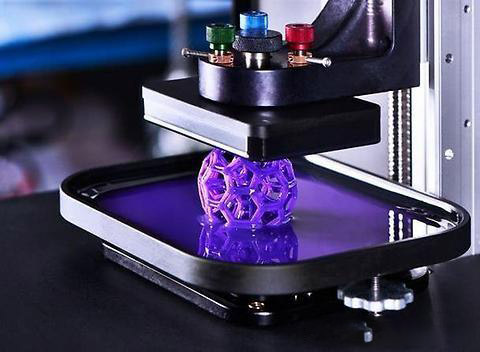
Post-Processing for 3D Printed Prototypes
Once a 3D printed prototype has been completed, post-processing may be necessary to improve its appearance, strength, or functionality. While 3D printing technologies have advanced, the raw printed part may still require additional work to meet the desired specifications. Post-processing steps vary depending on the material used and the intended application, but some common processes include:
After post-processing, a thorough inspection of the 3D printed prototype is essential to ensure it meets the required design specifications and quality standards. This inspection typically involves checking for dimensional accuracy, surface finish, strength, and overall functionality. Common inspection methods include visual inspection, mechanical testing (e.g., tensile or compression tests), and using precision measuring tools like calipers or coordinate measuring machines (CMM).
Inspection is also vital for identifying potential issues that may have occurred during the printing or post-processing stages. For example, warping, layer misalignment, or poor bonding between layers can affect the functionality of the prototype. By performing a detailed inspection, developers can identify and address any issues early, preventing costly mistakes later in the development process.
The world of 3D printing prototyping is evolving rapidly. New technologies, materials, and techniques are constantly emerging. Staying updated on the latest trends and advancements in 3D printing will help ensure that you are using the best tools and methods available. Regularly exploring industry news, attending trade shows, and engaging with the 3D printing community will help you stay at the forefront of innovation.
Documenting the entire 3D prototyping process, from design to post-processing, is key to ensuring a successful outcome. Proper documentation helps track changes, materials, settings, and lessons learned throughout the project. This information is valuable for future projects, as it allows for faster iterations, improvements, and troubleshooting. Well-maintained records also assist with meeting regulatory requirements or quality standards in industries like healthcare or aerospace.
3D prototyping is an iterative process. Once you have completed a prototype and tested it, you may discover areas for improvement. Iteration is an essential part of product development, as it allows designers to refine their designs based on real-world feedback. If a prototype doesn’t meet expectations, the ability to make adjustments and create a new version quickly is one of the greatest advantages of 3D printing. Continuous improvement through iteration helps reduce errors in the final product and ensures that the design is optimized for manufacturing.
By following these post-processing tips, inspection steps, and success strategies, 3D prototyping becomes a powerful tool in product development. Whether you're working on prototypes for custom CNC machining, CNC prototyping, or any other field, these practices will help ensure that your prototypes are functional, high-quality, and ready for the next phase of production.
Before diving into 3D prototyping, several factors must be carefully considered to ensure the success of your project. While the ability to quickly produce prototypes offers significant advantages in design and testing, it's essential to take a strategic approach to avoid common pitfalls and ensure that the final product meets your expectations. From material selection to understanding the nuances of 3D printing technology, there are key considerations to evaluate. Below are four crucial aspects to think about before starting your 3D prototyping project.
Selecting the right 3D printing material is fundamental to achieving your prototype's desired strength, durability, and finish. The choice of material depends on the nature of the prototype, its functionality, and the final application. There are numerous 3D printing materials available, ranging from plastics and metals to resins and composites. Each material has specific properties that make it more suited for certain applications.
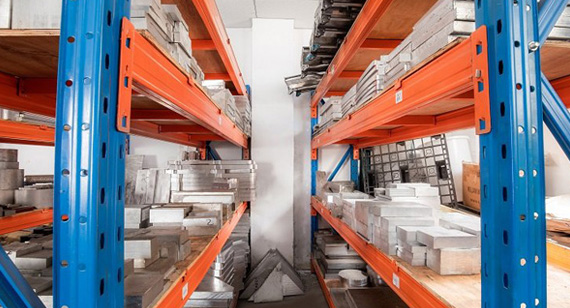
Before Choosing a Material, You Need to Check the Following:
The cost of materials can vary significantly, depending on the type of material and its quality. For example, high-performance materials like carbon fiber-infused filament or metal powders can be much more expensive than standard PLA or ABS plastics. It's important to align the material cost with your project budget, especially if you plan to print multiple iterations of the prototype.
Ensure that the material you select can deliver the accuracy required for your design. Some materials may shrink or warp during printing, which can affect the dimensional precision of the prototype. Additionally, check the quality of the material itself—ensure it's of high grade and compatible with your 3D printing technology to avoid issues such as poor adhesion or weak structural integrity.
Different materials come with their own set of design rules. For instance, materials like PLA are generally easier to print with, but they may not be suitable for high-temperature applications. Understanding the material's properties, such as tensile strength, heat resistance, and flexibility, is crucial in designing a prototype that meets your specifications.
2. Product Application
Consider how the 3D printed prototype will be used in its final product application. Will it undergo functional testing or simulate real-world conditions? Understanding the product's intended application can guide your decisions on material choice, finishing processes, and necessary mechanical properties. For instance, a prototype for a consumer product may prioritize aesthetic finishes, while a functional prototype for industrial machinery must focus on durability and strength.
3. 3D Printing Technology
The 3D printing technology you choose will play a significant role in determining the outcome of your prototype. Different 3D printing methods have their own strengths and limitations. For example:
Choosing the right 3D printing technology ensures that the printing process matches the requirements of your prototype's complexity and desired finish.
4. File Format
Before you start printing, ensure that your prototype's CAD design is saved in a compatible file format. Most 3D printers use specific file types to interpret design data, so it’s critical to use the appropriate format for your machine. Common file formats include:
Selecting the correct file format based on the 3D printing technology you are using is vital to ensuring smooth, error-free printing.
By carefully considering these four aspects—3D printing materials, product application, 3D printing technology, and file format—you can ensure that your 3D prototyping process is efficient, effective, and results in a high-quality product. These steps help mitigate potential challenges and enable faster iteration and improvement, ultimately leading to a more successful prototype development.
Rapid 3D prototyping has revolutionized the way products are developed, providing numerous advantages in terms of design flexibility, cost-effectiveness, time efficiency, and functional testing. In contrast to traditional prototyping methods, 3D printing allows for quick and iterative development, making it an ideal solution for industries such as aerospace, automotive, and healthcare. Below are the key benefits of using rapid 3D prototyping in the product development process.
1. Design Flexibility
One of the most significant advantages of rapid 3D prototyping is the design flexibility it offers. With traditional manufacturing techniques, making design changes can be costly and time-consuming, especially if tooling or molds are already in place. However, 3D printing enables designers to quickly iterate and modify prototypes without significant cost or delay. This flexibility allows for more experimentation, ensuring that the final product can meet both functional and aesthetic requirements. Whether it’s tweaking the design for better performance or exploring new shapes and structures, 3D prototyping offers the freedom to push design boundaries.
2. Saving Money
In traditional prototyping, the cost of producing physical models can be high due to the need for expensive materials, tools, and labor. Rapid 3D prototyping reduces these costs significantly by eliminating the need for molds and expensive tooling. Additionally, 3D printing uses only the material necessary for the prototype, which minimizes material waste and further reduces costs. For small production runs or when testing multiple iterations of a design, 3D prototyping is a much more economical solution compared to conventional methods. This cost-saving advantage makes it accessible for businesses of all sizes to engage in product development and innovation.
3. Saving Time
Speed is one of the most significant benefits of rapid 3D prototyping. Traditional prototyping can take weeks or even months, especially when using processes such as injection molding or machining. However, 3D printing allows for prototypes to be created in a matter of hours or days. This drastically shortens the product development cycle, allowing teams to test and refine designs more quickly. With the ability to produce prototypes rapidly, businesses can accelerate their go-to-market timelines, gaining a competitive edge and ensuring that they remain agile in fast-paced industries.
4. Functional Prototype Testing
Rapid 3D prototyping not only allows for aesthetic and design testing but also enables functional prototype testing. With the right materials, prototypes can be tested for mechanical properties, performance, and fit within the final product's system. For example, in industries such as aerospace or automotive, functional testing of CNC prototyping models can help detect potential flaws early in the design phase, saving time and money in the long run. Additionally, functional testing in 3D printed prototypes can reveal issues such as durability, heat resistance, and overall performance, ensuring that the final product will meet necessary specifications and standards.
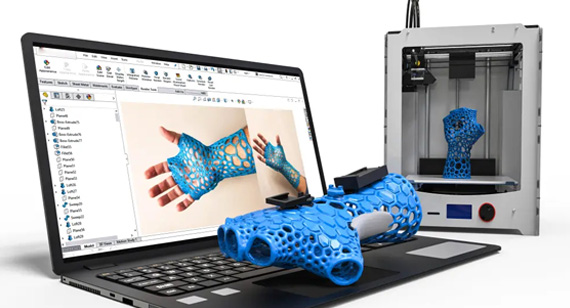
While rapid 3D prototyping offers numerous benefits, there are certain limitations to consider. Despite the technology's advancements, there are still challenges related to material selection, size limitations, and the accuracy of prototypes. Understanding these limitations will help businesses make informed decisions when incorporating 3D printing into their product development process.
1. Limited Material Selection
Although 3D printing has evolved, it still has a more limited selection of materials compared to traditional manufacturing methods. While there are materials like plastics, resins, and even metal powders available for 3D printing, not all materials are suitable for every application. For example, high-performance materials used in injection molding, such as certain metals and alloys, may not be easily replicated using 3D prototyping. Additionally, many 3D printed materials have limited mechanical properties, such as low tensile strength or flexibility, which may not meet the functional requirements of more demanding applications.
2. Mechanical Properties
While 3D printing offers an impressive array of materials, the mechanical properties of these materials often don’t match those of materials used in traditional manufacturing methods. For instance, 3D printed parts may not have the same strength or durability as cast, forged, or machined parts. This can pose challenges for functional prototypes that need to withstand rigorous conditions or high-stress environments. Although there are advancements in CNC machining services to create prototypes with stronger materials, 3D prototyping often requires post-processing to improve mechanical properties, adding to the time and cost involved.
3. Heat Resistance
Certain 3D printing materials may not offer the heat resistance required for high-temperature applications. For example, standard plastics like PLA or ABS can deform under heat, which makes them unsuitable for prototypes that need to function in high-temperature environments. While there are heat-resistant materials available for 3D prototyping, they may not offer the same performance as traditional manufacturing materials. This limitation means that in some cases, 3D prototyping might not be the best choice for parts or products that require exceptional heat resistance, such as engine components or aerospace parts.
While rapid 3D prototyping is an incredibly useful tool in the product development process, understanding its limitations is crucial for choosing the right prototyping method. By weighing the advantages and limitations, businesses can effectively decide how to incorporate 3D printing prototyping into their workflow, ensuring they use the technology where it adds the most value while acknowledging where traditional methods may still be necessary.
While 3D printing has revolutionized prototyping and manufacturing, there are still inherent size limits to the objects that can be printed. These constraints are largely dictated by the size of the 3D printer’s build platform and the technology used. For businesses and product developers, understanding these size limitations is crucial to effectively plan and execute 3D prototyping projects.
Impact on Complex Designs
The size limitations of 3D printers can significantly impact the creation of complex designs, particularly those with intricate details or parts that require large dimensions. For instance, a 3D printed prototype may need to be split into smaller pieces due to the printer’s build volume restrictions. While these smaller pieces can be printed separately, they may require additional time, cost, and effort to assemble and post-process. Furthermore, intricate designs may suffer from resolution limits, leading to compromises in the final prototype’s fidelity.
Impact on Massive Production
Another area where the size limit of 3D printers becomes a challenge is in massive production. When producing a large number of prototypes or parts, scaling up the size of the printed objects often requires specialized printers with a larger build volume. In the case of large-scale production, traditional methods like injection molding may still be more practical and cost-efficient. Additionally, the print time for larger objects increases, making 3D printing less optimal for rapid production runs. Understanding these size restrictions helps businesses make better decisions when choosing the right manufacturing method for both small and large-scale production needs.
Selecting the right material for 3D printing prototypes is essential for ensuring the success of your project. The material not only affects the quality and performance of the final prototype but also influences the time, cost, and technical feasibility of the print. Below are some of the most commonly used materials for 3D prototyping, each with its unique set of properties and applications.
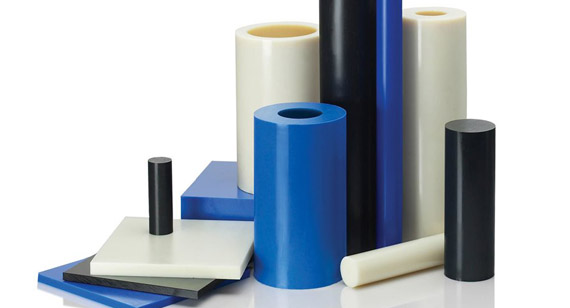
Nylon PA12
Nylon PA12 is one of the most versatile materials for 3D printing. It offers excellent durability, flexibility, and resistance to impact, making it ideal for both functional prototypes and end-use parts. Its ability to withstand high mechanical stress and wear also makes it perfect for applications in industries like automotive, aerospace, and healthcare. Additionally, Nylon PA12 has good chemical resistance, which adds to its versatility in various environments.
Multijet Fusion PA12
Multijet Fusion (MJF) PA12 is a specialized material designed for 3D printing with the MJF technology. It offers improved mechanical properties compared to standard PA12, including better strength and durability. MJF PA12 is also noted for its high-resolution prints and can produce prototypes with smooth surfaces and fine details. This material is often used for highly complex and precise prototypes, such as those needed in industries like medical devices or consumer electronics.
Prototype Resins
Prototype resins are designed for high-resolution 3D printing and are often used in applications that require precise detail, such as CNC prototyping. These materials are typically favored for SLA (Stereolithography) printing and are ideal for creating visually accurate prototypes. While prototype resins are great for showcasing product design and fit, they may not offer the same level of durability or functional properties as materials like nylon or TPU. They are, however, perfect for demonstrating the aesthetics and form of a product.
PLA (Polylactic Acid)
PLA is one of the most commonly used materials for 3D printing prototypes, especially for beginners or those working on low-stress applications. Made from renewable resources like cornstarch, PLA is biodegradable and easy to work with. It is a good choice for creating prototypes that don’t need to endure high stress or harsh environmental conditions. PLA prints at a lower temperature, reducing energy consumption during production, and is often used for visual prototypes or educational models.
TPU (Thermoplastic Polyurethane)
TPU is a flexible and durable material ideal for creating prototypes that need to exhibit elasticity and impact resistance. This material is commonly used in industries that require flexible components, such as in the manufacturing of phone cases, wearables, or automotive parts. TPU is known for its high abrasion resistance, low friction properties, and excellent flexibility. It’s particularly useful when designing prototypes for parts that must bend or stretch.
At VMT, we offer comprehensive 3D printing services to help you bring your product ideas to life. Whether you're developing prototypes for complex designs or need a fast and cost-effective way to test and refine your concepts, our team of experts is equipped with the latest CNC prototyping technologies and a variety of materials to meet your needs. We specialize in high-quality custom CNC machining and CNC machining services, ensuring that your prototypes are not only accurate but also functional. From design to post-processing, VMT is here to support your entire 3D prototyping journey.
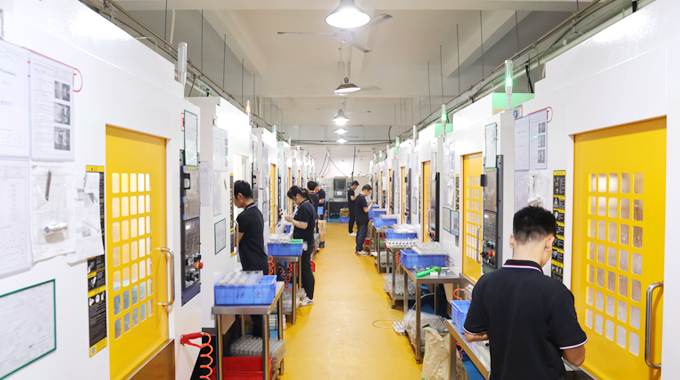
Rapid 3D prototyping has drastically improved the way industries approach product development. By offering speed, cost savings, and design flexibility, 3D printing has become an essential tool in many sectors, from aerospace to consumer products. However, there are limitations related to material selection and size constraints, which must be considered when deciding whether 3D printing is the right solution for your needs. With advancements in CNC machining and 3D prototyping technologies, businesses now have more options than ever to create functional, durable prototypes that can be tested, refined, and optimized before full-scale production.
Can I use a 3D printer to make prototypes?
Yes, 3D printers are widely used to make prototypes. They allow designers and engineers to quickly turn digital models into physical prototypes, enabling rapid testing and iteration. 3D prototyping is particularly useful for evaluating fit, form, and function before proceeding to full-scale production.
What are the benefits of 3D prototyping?
3D prototyping offers numerous benefits, including reduced development time, cost savings, and increased design flexibility. It allows for quick iteration and refinement of prototypes, helping to identify and address design flaws early. Additionally, rapid prototyping enables the creation of complex geometries that may be difficult or costly with traditional manufacturing methods.
What is 3D rapid prototyping?
3D rapid prototyping refers to the quick fabrication of a physical model using 3D printing technologies. This process is aimed at reducing product development cycles by quickly creating accurate prototypes for testing and iteration. It allows designers to visualize and evaluate prototypes in real-world conditions without waiting for long lead times associated with traditional methods.
How to create a rapid prototype?
To create a rapid prototype, you typically follow these steps:
What does CAD stand for in 3D printing?
CAD stands for Computer-Aided Design. It refers to the software tools used to create digital models for prototypes and products. In 3D printing, CAD designs are converted into printable files (like STL or OBJ) that the printer uses to create physical prototypes.
Is rapid prototyping the same as 3D printing?
Rapid prototyping is a broader term that includes several methods of quickly creating prototypes, including 3D printing. While 3D printing is one of the most common techniques used for rapid prototyping, other methods like CNC machining or injection molding may also fall under the umbrella of rapid prototyping, depending on the speed and intended purpose of the prototype.
What are the 3 types of prototyping?
The three main types of prototyping are:
What are not allowed to be 3D printed?
While 3D printing offers a great deal of flexibility, certain items should not be printed due to ethical, safety, or legal concerns. Examples include:
Is it illegal to 3D print a 40k model?
It is not illegal to 3D print a 40k model for personal use; however, printing and selling 40k models without proper licensing from the copyright holder (Games Workshop) may infringe on intellectual property rights. Always ensure you have the right to print and distribute such designs.
What materials cannot be 3D printed?
While there is a wide range of printable materials, some materials may not be compatible with 3D printers, including:
Is it toxic for 3D printing?
Most 3D printing materials are safe, but some, particularly those used in FDM 3D printing, may release fumes during the printing process. Materials like ABS can emit potentially harmful volatile organic compounds (VOCs). It's important to ensure proper ventilation when 3D printing with such materials.
Is PLA carcinogenic?
No, PLA (Polylactic Acid) is not considered carcinogenic. PLA is a biodegradable material made from renewable resources like corn starch and is widely used in 3D printing due to its low toxicity. However, some caution should still be taken when heating PLA as it can release small amounts of fumes, especially in poorly ventilated areas.
Do 3D printers consume a lot of power?
3D printers generally consume a moderate amount of power compared to other manufacturing equipment. The power usage depends on the type of printer and the materials being used. FDM printers, for example, typically use between 50 and 250 watts per hour. 3D printing may be energy-efficient for small production runs, but larger, high-temperature printers could consume more electricity.
What does PETG mean?
PETG stands for Polyethylene Terephthalate Glycol, a popular material used in 3D printing. It combines the strength of PET with the added benefit of being easier to print. PETG is known for its durability, impact resistance, and chemical resistance, making it ideal for functional prototypes and end-use parts.
Is PLA edible?
No, PLA is not edible. While PLA (Polylactic Acid) is made from plant-based materials, it is not safe to consume. It is biodegradable and used for 3D printing, but it should not be ingested.
Is PETG stronger than PLA?
Yes, PETG is generally stronger than PLA. PETG offers better impact resistance, flexibility, and durability, which makes it a more suitable choice for prototypes and parts that will undergo physical stress. PLA, on the other hand, is more rigid and is typically used for non-functional or low-stress applications.
